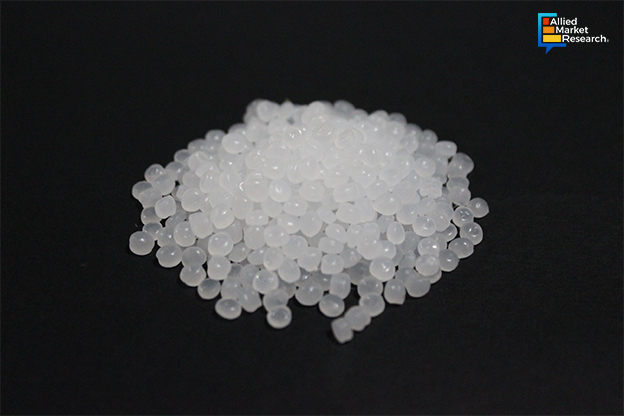Analyzing the Excellence of Petroleum Resins

29 Nov
2023
Over the past few years, petroleum resin has emerged as a beneficial chemical product with diverse properties. Its low melting point, resistance to water and other chemicals, and cost-effectiveness make it highly useful across several fields such as adhesives, rubber, paint, ink, and many others. In this article, we will discuss diverse applications of petroleum resins and the participation of prominent companies in shaping the industry.
How petroleum resins are favoring various industrial operations:
Adhesives and sealant applications: These popular resins have long been integral to the adhesives and sealant industry. Their exceptional tackifying properties enhance the performance of adhesives. Therefore, the pressure-sensitive tapes made for these thermoplastic substances possess improved adhesive strength, water resistance, and acid and alkali resistance. Moreover, these chemical products can also contribute to sealant formulations, offering enhanced durability and flexibility.
Rubber and tire industry innovations: These highly versatile resins also find their extensive use in the rubber and tire industry. They contribute to enhancing tire performance by improving the adhesion properties of rubber compounds. These resins also play a pivotal role in optimizing the overall quality, durability, and safety of tires.
Inks and coatings: In the printing sector, these multifaceted resins can aid the production of high-performance inks and coatings with improved color stability, print quality, and adhesion. These inks are highly useful in packaging, labels, and publications.
3D printing: With rapid advancements in technology, 3D printing has opened new avenues for these resins. This technological integration can optimize the capability of these flexible resins to provide excellent flow and adhesion properties in additive manufacturing processes.
The petroleum resins market is witnessing progressive growth owing to the increasing demand for personal hygiene products, paints, building and construction materials, and tires. Based on resins, the hydrogenated hydrocarbon resins segment is predicted to hold the highest market share by rising at a CAGR of 5.4% during the analysis period from 2023 to 2028. The paints and coatings segment, based on application, is expected to rule the roost, growing at a CAGR of 5.5% over the estimated period. Country-wise, China is predicted to manifest a healthy CAGR of 5.9%, however, regionally, Asia-Pacific is expected to exhibit the highest CAGR of 5.4% during the forecast timeframe.
Product launches in the industry:
Owing to the increasing demand for premium packaging and manufacturing materials across industries, many leading players have come up with inventive product launches. A suitable example is the launch of a new hydrogenated hydrocarbon resins plant, namely, “EscorezTM plant” by ExxonMobil, a leading oil and gas company. With this launch, the company planned to deliver 90,000 tons of hydrocarbon resins per year in Singapore to meet the growing demands for these resins from the packaging and tire manufacturing industries.
Mergers and acquisitions among key players:
The market has undergone a series of mergers and acquisitions to foster the competitive landscape. A notable instance is the acquisition of Goodyear Tire & Rubber Company by Total, a French multinational integrated energy and petroleum company. With this acquisition, the companies aimed to deliver a comprehensive range of petroleum resins in manufacturing operations across France, Carling, and Beaumont, TX.
Another example is the acquisition of Verde Bioresins Inc., a full-service bioplastics company by TLGY, a special-purpose acquisition company to provide high-performance hydrocarbon resins for the development and design solutions, replacing the use of conventional plastics.
To wrap up, the constantly increasing demand for hot-melt adhesives in the packaging industry can boost the growth of the market in the upcoming years. In addition, a significant need for petroleum resins in rubber-compounding applications in automobiles and many other domains can also create expansive opportunities for the market.

Rosy Behera
Author's Bio- Rosy Behera holds a bachelor’s degree in Electrical and Electronics Engineering and now she is a content writer by profession. She loves to portray her thoughts and ideas with a nice command of words. Grabbing an audience with her creative write-ups is one of her biggest assets so far. Apart from writing, she is a certified “Odisi” dancer and has done Gardharva in Drawing, Painting, and Arts. She always explores new things through travel and is a big foodie.
Avenue: Entire Library membership of Allied Market Research Reports at your disposal
- Avenue is an innovative subscription-based online report database.
- Avail an online access to the entire library of syndicated reports on more than 2,000 niche industries and company profiles on more than 12,000 firms across 11 domains.
- A cost-effective model tailored for entrepreneurs, investors, and students & researchers at universities.
- Request customizations, suggest new reports, and avail analyst support as per your requirements.
- Get an access to the library of reports at any time from any device and anywhere.
Related Post
-
How are Submarine Cables Transforming Global Connectivity with Enhanced User Experience?
-
Endoscopy Procedures: Transformations in Techniques and Applications
-
AI-Powered Video Analytics: How the Product Actually Works for enterprises
-
Painting Robots: Transforming Precision Coating and Creative Applications
-
Innovations in Pharmacovigilance Systems Advancing Patient Safety
-
Understanding Edge Security: Keeping Data Safe Near the Source
-
Exploring the Use and Advancements of 3D Laser Scanners in Professional Applications
-
Reinforcing Industrial Controls with Smarter Tools and Training








